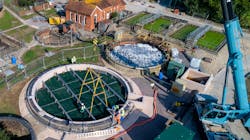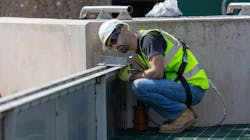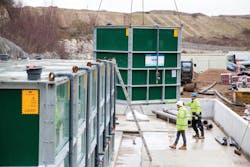Securing Wastewater Treatment Fit For the Future
As population growth puts pressure on wastewater treatment plant capacity, Andrew Baird, technical director, WPL, makes the case for better understanding and greater flexibility.
It is no surprise that Ofwat has coupled population growth with climate change as the two long-term trends putting water industry assets under strain. The number of people living in the UK is expected to rise by 3.6 million (5.5%) over the next 10 years, from an estimated 65.6 million in 2016 to 69.2 million in 2026.
The demographic change was also cited in Thames Water’s recent announcement that it is constructing its first sewage works since 2005, in Guildford. The utility says population growth, which will particularly impact London and the southeast, makes the new works necessary.
In Ebbsfleet new town in Kent, plans to build 15,000 new homes for an expected population of 40,000 are already underway and as mains sewerage is currently unavailable, WPL modular packaged plant is providing an effective alternative. The modular configuration of the treatment units is designed to be highly flexible and will serve the town as it expands.
New build is an obvious way to meet the demand of population growth, especially when a whole town or housing development is underway, but optimization of existing wastewater treatment assets can also reap significant rewards.
In my 30 years in the water industry, I have installed, restored and maintained a wide range of wastewater treatment equipment and have identified many ways to drive efficiency and deliver major savings in both capital and operational outlay at many sites.
One option that is sometimes overlooked is the repurposing of older assets, which are typically longer lasting because they were over-engineered when investment was less constrained. The outer shells of most older concrete treatment tanks not only remain intact, but are strong and have plenty of life left to give.
While sometimes neglecting the potential of this legacy infrastructure, there is simultaneously a perception at large in the industry that an alternative wastewater treatment technology could be available in the next 20 years - but no one has yet pinpointed exactly what that is.
The water industry knows it urgently needs a technology that is available, robust, flexible and financially viable. My belief is that the solution is already here in the shape of modular offsite build - and it is cost positive.
In a recent project with Wessex Water, WPL retrofitted an existing circular sludge tank with WPL’s Hybrid-SAF cells, which proved significantly more cost-efficient than the trickling filters originally planned and doubled process capacity. The utility shared the site’s 2040 design horizon, ensuring the solution was futureproofed for anticipated population growth.
In our experience, the cost of traditional treatment plants is two to four times higher than modular build and the civil engineering work required means much longer is required onsite than for packaged plant installation. For WPL, asset specification is based on a 20-year lifecycle, which takes into account localized population growth and migration.
After undertaking hydraulic analysis, WPL’s design engineer advised minor alterations and improvements including switching the media to one with a higher surface area. The changes near doubled the flow and load and major capital investment was deftly avoided.
Those charged with making investment decisions want certainty that assets are reliable and that they will work. Pollution risk to the environment is non-negotiable - water companies are coming under heavy scrutiny and corporate reputation has never been more highly prized.
Asset management requires continual development if utilities are to meet the major challenges of population growth and climate change in a way that is sustainable and affordable to customers. Asset optimization that can fuse legacy infrastructure with new modular technology creates robust futureproofed treatment plant with the flexibility to adapt to those innovations sitting just beneath the horizon.
To learn more. visit wplinternational.com.


